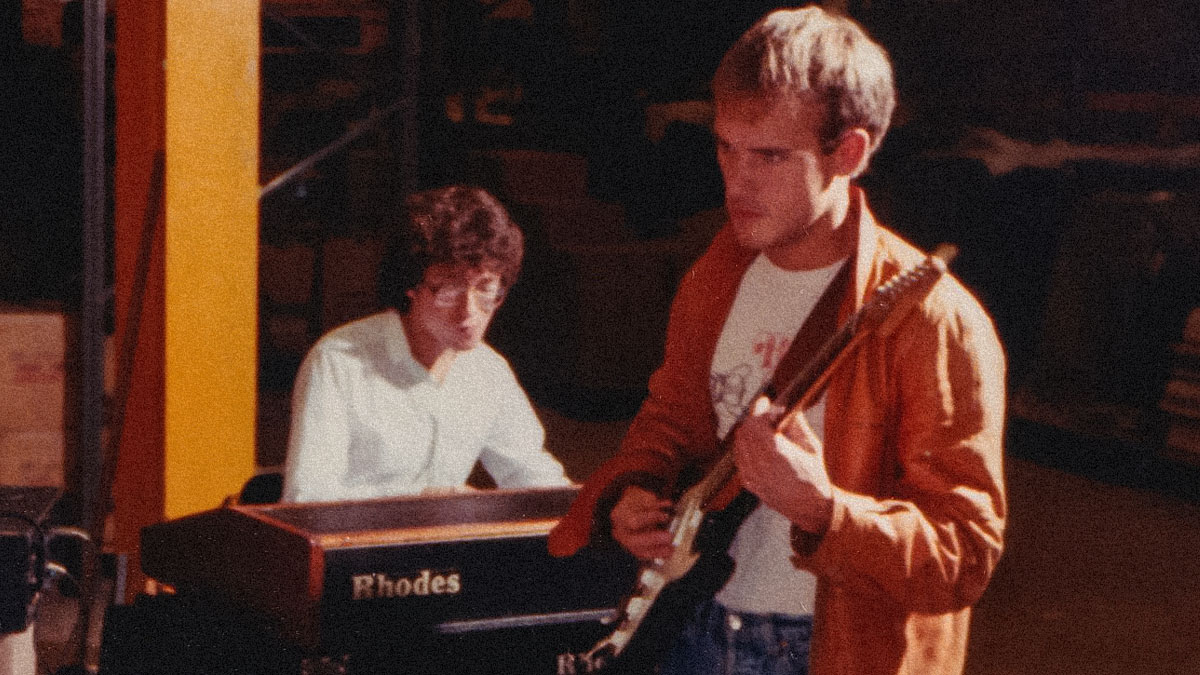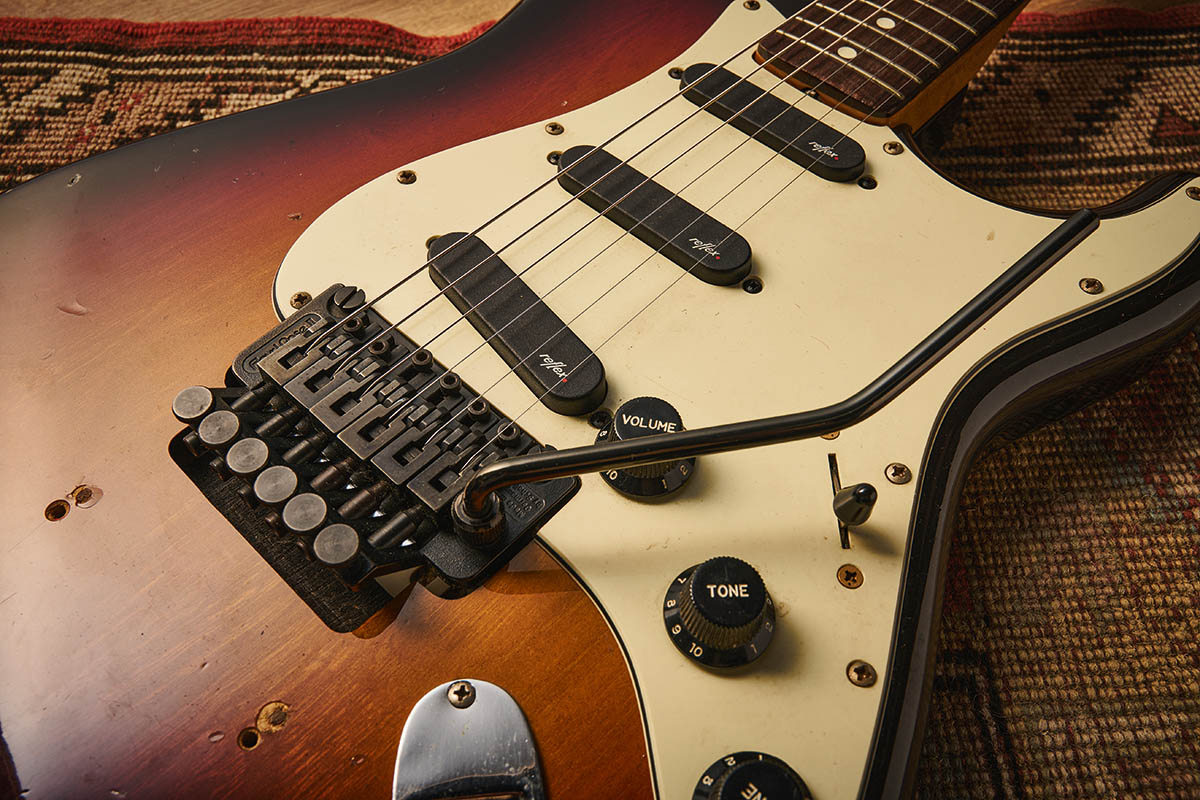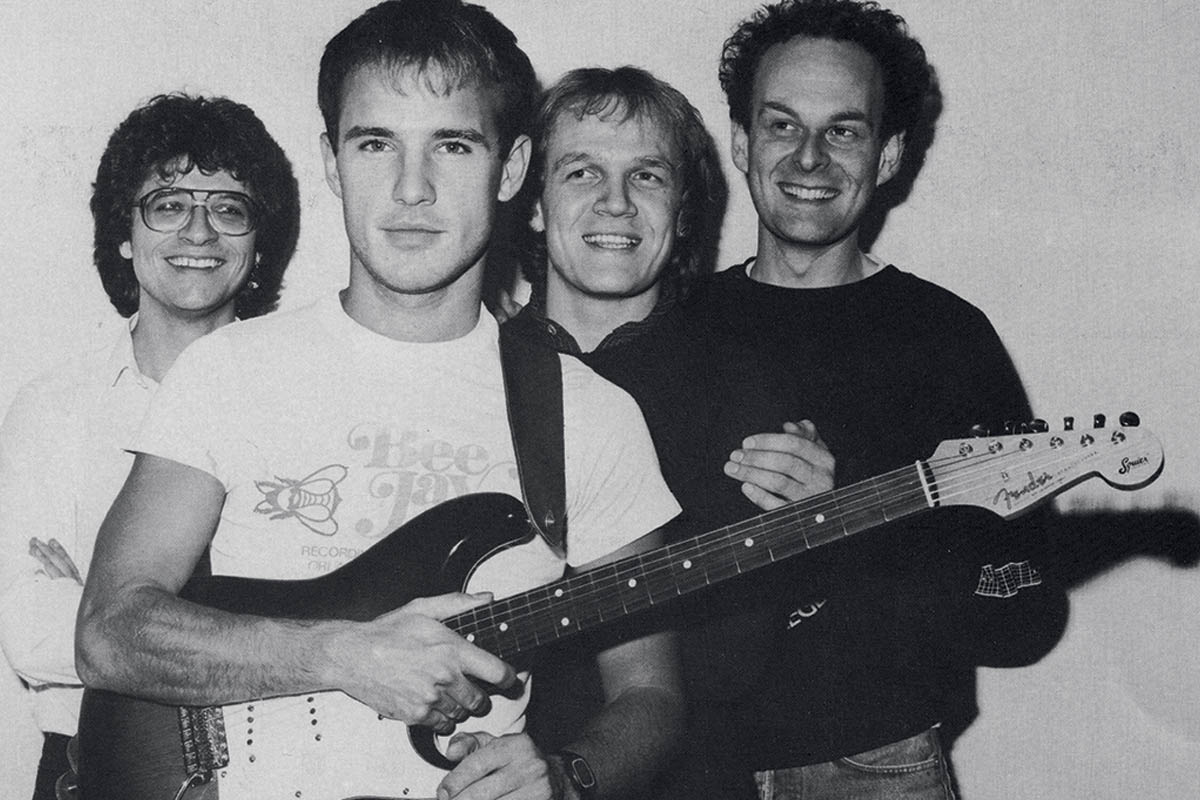
Talk to any guitarist who was around in the early to mid-80s about Alan Murphy and you’re certain to get an enthusiastic response. In fact, it would also be fair to say that younger players who discover his work now are just as impressed.
Murphy was an in-demand session player, rather than a household name. But that suited him just fine – he was motivated by a love of music, not the spotlight. Nevertheless, his talent and style became duly renowned in industry circles.
Not only did Murphy play for Kate Bush, Go West, Level 42, Scritti Politti, Mike + The Mechanics, Berlin, Hans Zimmer and Trevor Horn, among a host of others, he also worked extensively with Fender’s John Hill (director at London’s AR&D Centre) as a tone consultant, demonstrator, and content artist until his untimely passing in 1989.
“Alan was a major part of turning around people’s perception of CBS-era Fender into what post-CBS Fender became,” Hill tells us today. “We created the ‘Fender Hot Squad’ and toured all over the UK and Europe telling the Fender story through the music of every Fender era, from country and rockabilly to rock ’n’ roll, rock, prog, and punk. Alan’s amazing playing and phenomenal sound turned heads wherever he went.”
Born To Play
Murphy was born in London in 1953, perfect timing for the British blues boom a dozen or so years later. He very much became a ‘man on the scene,’ attending performances by Blind Faith, T. Rex, and The Rolling Stones, which inspired him to acquire his first guitar.
SFX had this crazy idea of releasing some independent music… but we realised that nobody was likely to sign us up and release an album
Alan Murphy
Murphy's influences quickly expanded from the blues to jazz fusion and beyond, and he would search for gigs through adverts in Melody Maker, a weekly musician’s paper then used by everyone, from pub singers to major acts.
Armed with his trusty Gibson ES-335, Murphy racked up local, then international, gigs as both his reputation and contacts list grew. He became associated with the likes of Long John Baldry and Ace (featuring Paul Carrack), and began landing the occasional session gig.
Demand for studio work increased after Murphy joined Kate Bush’s band in 1979, though the first mainstream recording of his soloing skills appears on Nick Heyward’s Warning Sign in 1984. By then, he had switched largely to Strats or Strat-style guitars. Listening back today, Murphy's distinctive style was already formed – and people were sitting up to take notice…
Murphy now found he could cherry-pick recording sessions, allowing time for a project with fellow session men Felix Krish (bass), Richard Cottle (keyboards), and Tony Beard (drums) – some of whom he later took with him to Go West. Initially named the Stapleton All Stars, they gained a following on the London pub circuit, subsequently morphing into SFX with the intention of becoming a recording act in their own right, albeit recording in Krish's house.
Murphy later remembered: “We had this crazy idea of releasing some independent music… but we realized that nobody was likely to sign us up and release an album,” he told Robbie Gladwell in a Guitarist feature in 1986. The album SFX was eventually released, on the Naim label, but only after Murphy’s passing. However, this – plus various bootleg recordings shared online – document his amazing talent and style.
Fender Hot Squad
Circling back to where we began, Murphy, along with other SFX members, became the Fender Hot Squad, something he cited as a developmental milestone.
“When you have to play ‘to order’ in front of people, especially that kind of music, with other great players, you have to get your act together,” he told Guitarist. The consensus is unanimous: he did just that.
“Alan used two Fender Super Champs I gave him, plus one for spares and backup, with a Roland Dimension D in stereo,” says Fender’s John Hill, giving further insight of this period onwards.
“I also gave Jeff Beck the same setup and set up a recording studio at Jeff’s house with Alan’s help. Alan also had a pair of Fender Concert amps after helping me set up what became David Gilmour’s rig, which featured four Concert combos with four extension cabs, for Live Aid.
His first or possibly his second take was always the best one. I think he preferred not to be overly familiar with the chord progression; he preferred to work spontaneously
Peter Cox
“[Alan] loved Strats and he was working on an Alan Murphy Fender Signature Strat with Dan Smith [Fender’s former vice president of research and development] and myself when he passed,” Hill continues, “which was based on new noise-free single-coil pickups and a wraparound double-blade pivot bridge with a roller nut and locking pegs.
“Alan was involved in what would have been the first Fender signature guitar for Jeff Beck and pioneered the concept. Jeff used to see Alan play at the Cricketers pub and on Go West gigs. They had a lot of synergy on Strat single-pup guitar tone and edging amps.”

While this is a tantalizing glimpse of what might have been, it’s also interesting to note that Murphy's expertise went beyond the guitar player that was heard on record.
His approach to tones and equipment encompassed the traditional and cutting edge, with a live rig built around two tiny Fender Super Champs in stereo, switching to a DI/full range output for sparkly clean tones. Pioneering stuff. Add to this his early adoption of the then very new Kahler vibrato, plus the active electronics of the Aria Esprit and Reflex Strat pickups, and we start to get a fuller picture.
New Direction
Murphy's career was in full flight by late 1984, but joining Go West gained him far more mainstream and TV exposure.
“We were fans of a band called The Quick, featuring Colin Campsie and George McFarlane with Al’s mate Danny McIntosh on guitar,” vocalist Peter Cox tells us as he describes how Murphy first came into the band’s orbit. “I think they were signed to ATV, as were we. ATV put us in touch, which led to recording some demos – and that was our introduction to Al. We recorded a song called Special Girl; that’s the first solo Al played with us.
“That experience was much like any of the other sessions that Al did with us in that his first or possibly his second take was always the best one. I think he preferred not to be overly familiar with the chord progression; he preferred to work spontaneously.
“When you were in the studio with Al,” Cox continues, “the song would be one thing before he came in – the thing that you’d started off writing. Then, of course, Dave West [part of the original production team and a key architect in creating the Go West sound we all know] contributed his amazing musicality and synth sounds.
“But Al’s sessions would be quick, amazingly exciting – and once it was done… Well, it was on another level. I was always more excited about songs after Al had done his thing. How he got that enormous sound out of a Fender Super Champ, I just don’t know.”

Co-founder of Go West, guitarist Richard Drummie, holds memories of Alan that are equally as clear: “The first time I saw Al play was with Chris Rea on the Old Grey Whistle Test,” he tells us. “He was using a black ESP Strat, white scratchplate. Many years later he mentioned to me that he was going to sell it and I bit his arm off. It’s sitting in the corner of the room right now. A little bit of Al… Like most of the best players, the first couple of takes were the loveliest.
Even if you picked up his guitar when he went to the lavvy – you couldn’t make it sound like Al. His sound was in his heart and his hands
“Al was always together – I can’t remember him faffing. Not once. I may be wrong, but I think his rig in the studio with us was a guitar and a Fender Super Champ. I’ve got a guitar and a Fender Super Champ, but I can’t make it sound anything like Al. Even if you picked up his guitar when he went to the lavvy – you couldn’t make it sound like Al. His sound was in his heart and his hands.”
Murphy gave a short account of how he got his sound in one interview: “Everything you’ve heard on record will have been a Squier Strat with a Kahler or Floyd and a Super Champ. I’ve always used fairly thick plectrums and hit things fairly definitely and hard. When I first started to get into Stratocasters I used to like to string them heavy, but just recently I’ve started to get a little lighter because of the tremolo systems, getting the balance right.”
In The Studio
Go West’s producer Gary Stevenson, whose multi-million-selling production career now spans four decades, worked closely with Murphy to capture his spontaneous performances and distinctive sounds.
“He’s the reason I stopped playing on records!” says Stevenson of Murphy's influence.
“The first shock was the Fender Champ – I thought, ‘Whoa, what’s he brought that in for?!’ It was my first encounter with ‘it’s not the guitar or the amp, it’s the fingers.’ Because I had a little muck about on it and it didn’t sound like that when I played it… With Al it was a case of, ‘You’d better press record first thing,’ because most of the time it was the first or second solo – though I’d chop up takes sometimes and he’d come in and go, ‘Yeah!’
With Al it was a case of, ‘You’d better press record first thing,’ because most of the time it was the first or second solo
Gary Stevenson
“There were so many gems. The Don’t Look Down solo, that was a first take, and it was like, ‘What the fuck?’ The way I look at it, Al made me sound good. We’d bounce off each other coming up with parts – I’d get excited and drop him in three bars before and he’d pick up on it.
“He used to come into his own on the 12-inch mixes as well, like on the Bangs & Crashes album [in 1986]. We found playing upstrokes with Reflex pickups was just like a science-fiction guitar sound. We laughed about the amount of compression I’d use – I saw it as an effect on the clean guitars that he could work with. He was always open to experiment.”
Murphy went on to become a member of Level 42 in 1988. Frontman Mark King remembers: “We were recording the Staring At The Sun album in 1988, and we were looking for someone to play guitar on the album and ideally join the band permanently. Julian Mendelsohn was at the desk for us again and suggested Alan, whom he’d worked with on various sessions and thought would be a perfect fit.
“I think that, like most players at that time, I knew Alan to be a fantastic musician who could cover any part with a signature style and sound, and though I don’t recall having met him prior to these recordings I was excited at the prospect of working with him.
“There was always a real musicality in his approach, and so it was when he played on that album. If you check out his lines in the song Man, he got the vibe completely and made it so much better. Coming up with memorable and singable solos is a real gift. His solo on Gresham Blues is a great example.”
Lasting Legacy
Murphy is remembered with a smile by all who knew and worked with him – and while his playing leaves an enviable legacy, of course, he is also remembered fondly for his warmth, sense of fun, and willingness to share his love of music.
“We were pretty close,” says Go West’s Peter Cox. “It was really good for my personal confidence that as fantastic a player as Al would agree to be in our band. We spent a lot of time together. He introduced me to amazing things like Zappa’s Why Does It Hurt When I Pee? and Le Mystère des Voix Bulgares. He also made an amazing cup of tea!”
“He was as funny as they come, quick and dry, and the loveliest guy to share a tour bus with,” Level 42’s Mark King tells us. “Whenever I talk about him to other players, everyone knows of him, loves his work and calls him a legend. That’s some legacy.” Indeed, Fender’s John Hill puts him right up there with other luminaries of the instrument: “Take Jeff Beck, David Gilmour, and Allan Holdsworth,” Hill says. “Alan Murphy should be seen as being in that company.”
The final word goes to Go West guitarist Richard Drummie, who remembers the moment when Murphy was met as an equal by a bona fide rock VIP.
“We were rehearsing at Nomis [Studios], around the back of Olympia. Alan, Pete Cox and myself were standing around in reception waiting for something or other when the front door swung open and in walked Jimmy Page.
“I slept out all night to get my fifth-row tickets for Zeppelin at Earls Court in 1975. Anyway, he walks in, sees us standing there, smiles and starts to walk over. I’m thinking, ‘That’s bloody Jimmy Page, coming to talk to us.’ He’s feet away now and his smile gets broader as he says, ‘All right, Al. How’s it going?’”







